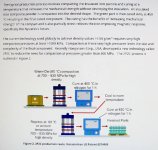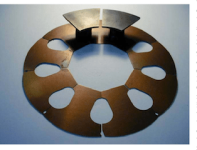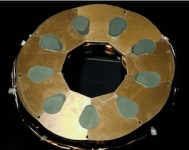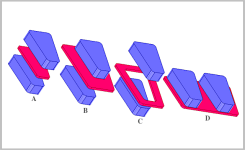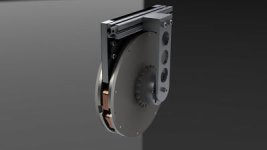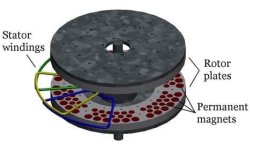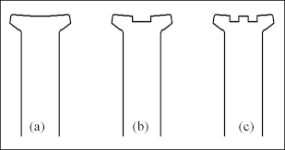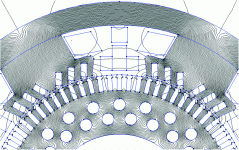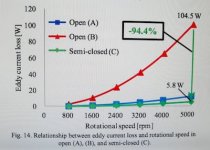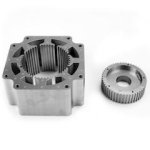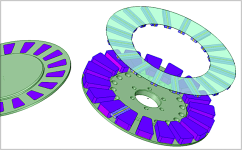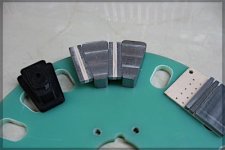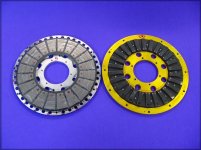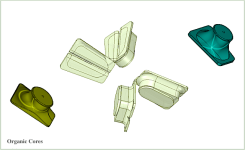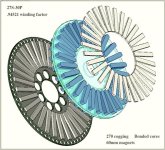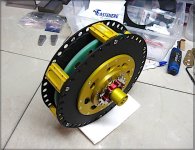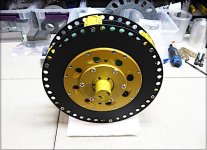APL
100 kW
- Joined
- Aug 6, 2018
- Messages
- 1,113
I've also been revisiting the idea of pressing your own cores DIY style. It occurred to me that the atomize-coated iron
powder that SMC is pressed from might be purchased and pressed into a machined steel mold, using a hydraulic jack and
a shop press. Easier said than done, but still might be possible.
It wouldn't have the same strict technical characteristics of factory SMC's, such as Somaloy, but may still be usable for
home brew motors. A single mold could make all the cores,.. and in an intricate shape. Of course, there are lots of
problems to overcome, such as type of binder, mold release, pressure regulation, etc. I don't know too much about it yet,
but the benefits of being able to do so would be great, so it might deserve at least a good look.
As it turns out, the powder may be available, in bulk from China, but the minimum order is 50 kilos, (barrel), at $10. a kilo.
($500. per drum) Certainly could make a lot of motors out of that! :lol:
But I haven't looked around much, just exploring possibilities at the moment.
https://cisri-int.en.made-in-china.com/product/qMdxKaAjETIZ/China-Soft-Magnetic-Alloy-Powder-SMD-Fesicr-Amorphous.html
One problem I see, is that the standard SMC material is pressed at a very high pressure,.. on the order of 600 to 800 MPa's,
or megapascal's. 600 MPa is equal to 87,022 lbs. or 43 tons.
Hmmm, I might be dreaming a little too much. :wink: But there are hydraulic shop presses that will do 50 tons, for not
too much money. Big enough to do a 600 MPa part. (Harbor Freight, Northern Tool)
It's still a little unclear as to whether that kind of pressure is all that necessary for bonding, or to get the desired specs
needed. They don't appear to use any epoxy binders, unless it's in the powder mix. If not, then it appears to be just the
pressure that bonds it together.
30 second compacting video; https://www.youtube.com/watch?v=lJ22svZFGKc
Somaloy specs.; https://www.hoganas.com/globalassets/download-media/sharepoint/brochures-and-datasheets---all-documents/somaloy-3p_material-data_june_2018_2273hog.pdf
powder that SMC is pressed from might be purchased and pressed into a machined steel mold, using a hydraulic jack and
a shop press. Easier said than done, but still might be possible.
It wouldn't have the same strict technical characteristics of factory SMC's, such as Somaloy, but may still be usable for
home brew motors. A single mold could make all the cores,.. and in an intricate shape. Of course, there are lots of
problems to overcome, such as type of binder, mold release, pressure regulation, etc. I don't know too much about it yet,
but the benefits of being able to do so would be great, so it might deserve at least a good look.
As it turns out, the powder may be available, in bulk from China, but the minimum order is 50 kilos, (barrel), at $10. a kilo.
($500. per drum) Certainly could make a lot of motors out of that! :lol:
But I haven't looked around much, just exploring possibilities at the moment.
https://cisri-int.en.made-in-china.com/product/qMdxKaAjETIZ/China-Soft-Magnetic-Alloy-Powder-SMD-Fesicr-Amorphous.html
One problem I see, is that the standard SMC material is pressed at a very high pressure,.. on the order of 600 to 800 MPa's,
or megapascal's. 600 MPa is equal to 87,022 lbs. or 43 tons.
Hmmm, I might be dreaming a little too much. :wink: But there are hydraulic shop presses that will do 50 tons, for not
too much money. Big enough to do a 600 MPa part. (Harbor Freight, Northern Tool)
It's still a little unclear as to whether that kind of pressure is all that necessary for bonding, or to get the desired specs
needed. They don't appear to use any epoxy binders, unless it's in the powder mix. If not, then it appears to be just the
pressure that bonds it together.
30 second compacting video; https://www.youtube.com/watch?v=lJ22svZFGKc
Somaloy specs.; https://www.hoganas.com/globalassets/download-media/sharepoint/brochures-and-datasheets---all-documents/somaloy-3p_material-data_june_2018_2273hog.pdf


